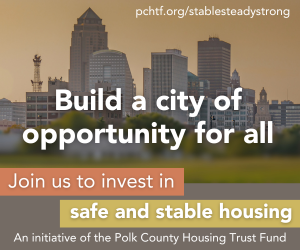On Leadership: Enabling a greater sense of belonging in the workplace

What does it mean for someone to feel they truly belong in a workplace? This question has been on my mind after reading a Forbes article that said, “Many of us have tried many things over the years to encourage [belonging] at work — affinity clubs, group contests, community service projects, employee recognition days. These are worthwhile efforts, but they aren’t getting the job done.”
Belonging as a critical component of work seems to be escalating, a logical outgrowth of inclusion, a topic which became more visible in recent years with attention on diversity, equity and inclusion. Research shows that the desire for belonging has lately been fueled by our evolving hybrid and technology-enabled workplace environment and by a world increasingly characterized by uncivil interactions. As a recent Harvard Business Review survey on business and leadership challenges for 2024 said, “While the focus on technology skills grows, leaders still lead people, so there will be a continued emphasis on inspiring, motivating and enabling a greater sense of belonging in the next year.”
I was talking to a former colleague recently about workplace belonging and we recalled the evolution of some employee engagement work we did when we worked together.
At that organization, we had an online site called “Ask the Executive Leadership Team (ELT),” where employees could submit comments anonymously. When I first started leading that organization, employees actively used the site and were very vocal about their grievances. Comments ranged from the organization’s financial and operational health to culture, communication, compensation and more. Big issues. Over the years, we systematically addressed those challenges, developing a solid, long-term organizational strategy, improving financials and operations, stabilizing employment, improving compensation, introducing employee engagement surveys and implementing a measureable employee engagement plan in response to staff input. The employee engagement scores got better and better each year.
Yet, even as we tackled major issues and made quantifiable improvements, the anonymous site continued to get significant traffic. Even when we increased trust to the point where most people were very comfortable expressing their opinions and ideas to their leaders directly, there was almost always fresh criticism on the “Ask the ELT” site. Some days, it seemed like the more progress we made, the more pointed the feedback. At our leadership meetings, we were puzzled: We’d addressed so many key issues, and now folks were posting about dress code details, co-workers’ scented candles or workspaces and their colleagues’ behavior.
For some time, these continued comments were demoralizing to my fellow leaders and me. But one day, it struck me that we were unrealistic thinking the feedback would subside with success. Addressing culture never ends. Continually advancing the organization was my job. Responding to staff feedback was my job. Continuing to ask for feedback – no matter what – was my job. I also realized that the more progress we made, the more selective and discerning the feedback became.
In a way, we were experiencing Maslow’s Hierarchy of Needs at work. We’d addressed the survival and operational challenges and now we were getting to issues of thriving – so the input was more and more nuanced. The complaints were certainly valid and actually represented progress, even if it didn’t feel like it sometimes. These comments were almost always around individualism and civility; everything from personal appearance to desk decor, snappy emails, snarky tones or moodiness among colleagues. These were issues that went beyond the basics of the finances or operations, and hit at the true core of how someone felt at work. They were about belonging. Managing the big stuff was worthwhile, but that was just the surface. We had to look deeper.
In today’s world, most companies have implemented employee engagement programs. We’ve worked hard. We have gotten through a pandemic, economic upheaval, supply-chain disruption, establishing remote or hybrid models of work. We’ve focused on the big issues.
But too many people still feel like they don’t belong at work. The fact we recognize and can express this lack of belonging says we are making progress even if it doesn’t feel like it. It may mean that a company is getting the big stuff right, but now it is time to tackle the real stuff, the feelings.
The issues of individualism and belonging I confronted head-on in my past role are lurking in every company. We all want a workplace where we feel valued and respected by our leaders and co-workers. We want to be able to be authentic and visible and treated with civility by our colleagues. Unfortunately, that is not a universal reality. In recent years, the pace of commitment to DEI has slowed and, according to the Forbes article, research from meQ said 25% of employees regularly experience incivility at work. The author described incivility at work as “an anti-belonging strategy … that undermines team cohesion and collaboration, erodes trust between employees and their managers, and can ultimately damage the organization’s reputation.”
We all want a workplace where we feel valued and respected by our leaders and co-workers. We want to be able to be authentic and visible and treated with civility by our colleagues.
The HBR article said that creating a humanized approach to leadership “is not a short-term project but a complex, ongoing puzzle for leaders.” Helping your leaders manage teams that are dispersed and possibly needing more support than ever may not be easy. It will require tough conversations and self-reflection. It will require you to look beyond the obvious big issues at how people really feel and how they treat each other.
Are you ready to fearlessly delve into your workplace culture to understand what it truly means to belong? To look at the nuances? The puzzle may be complicated even for the most experienced leader, but addressing belonging may just be the key to your future success.

Suzanna de Baca
Suzanna de Baca is a columnist for Business Record, CEO of Story Board Advisors and former CEO of BPC. Story Board Advisors provides strategic guidance and coaching for CEOs, boards of directors and family businesses. You can reach Suzanna at sdebaca@storyboardadvisors.com.






